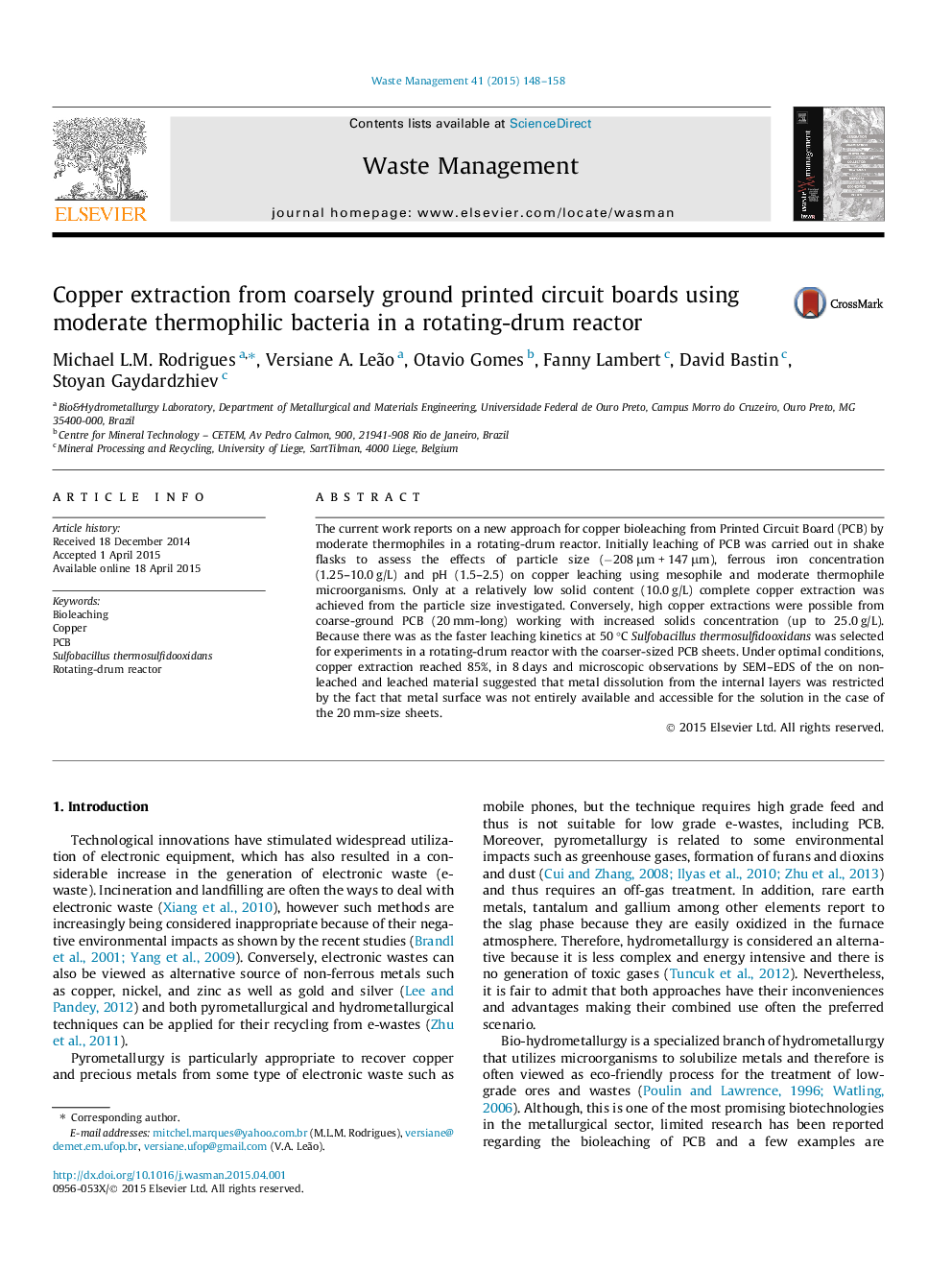| Article ID | Journal | Published Year | Pages | File Type |
|---|---|---|---|---|
| 4471314 | Waste Management | 2015 | 11 Pages |
•Copper bioleaching from PCB (20 mm) by moderate thermophiles was demonstrated.•Larger PCB sheets enable a cost reduction due to the elimination of fine grinding.•Crushing generated cracks in PCB increasing the copper extraction.•A pre-treatment step was necessary to remove the lacquer coating.•High copper extractions (85%) were possible with pulp density of up to 25.0 g/L.
The current work reports on a new approach for copper bioleaching from Printed Circuit Board (PCB) by moderate thermophiles in a rotating-drum reactor. Initially leaching of PCB was carried out in shake flasks to assess the effects of particle size (−208 μm + 147 μm), ferrous iron concentration (1.25–10.0 g/L) and pH (1.5–2.5) on copper leaching using mesophile and moderate thermophile microorganisms. Only at a relatively low solid content (10.0 g/L) complete copper extraction was achieved from the particle size investigated. Conversely, high copper extractions were possible from coarse-ground PCB (20 mm-long) working with increased solids concentration (up to 25.0 g/L). Because there was as the faster leaching kinetics at 50 °C Sulfobacillus thermosulfidooxidans was selected for experiments in a rotating-drum reactor with the coarser-sized PCB sheets. Under optimal conditions, copper extraction reached 85%, in 8 days and microscopic observations by SEM–EDS of the on non-leached and leached material suggested that metal dissolution from the internal layers was restricted by the fact that metal surface was not entirely available and accessible for the solution in the case of the 20 mm-size sheets.
